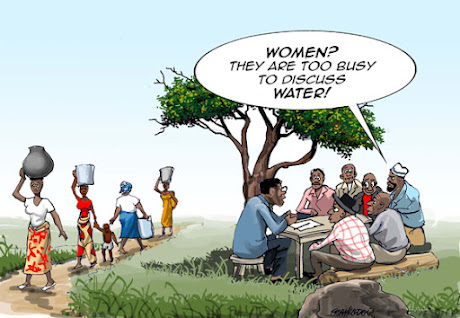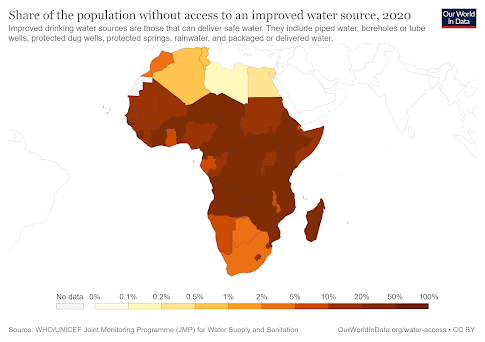Water and Sanitation 101
Hi everyone. Welcome to my first post on water and sanitation in Africa. Of course, I am no expert on these matters but join me on my blogging journey 😀
Why the theme?
Now, I’ll admit that I
chose the theme of water and sanitation before I even experienced one lecture.
That being said, I was immediately drawn to this specific thematic area due to
my personal experience of different water and sanitation conditions to that of
the UK. Although, not specific to Africa, India presents its own challenges
within this area which made me want to explore the theme further. Growing up,
my childhood holidays would be spent across different Indian states; Karnataka,
Andra Pradesh, Gujarat, Maharashtra to name a few. Staying in villages meant
that water would be fetched from a shallow groundwater well with a bucket and
rope as well as boiling water in the kettle for drinking, cooking and bathing. Experiencing
the vastly different water supply systems, makes me appreciate access to safe,
treated water supply I have at home in London.
What is Sanitation?
So how do we determine
water and sanitation issues in Africa? Perhaps, the first obstacle to cross, is
defining sanitation. Thereafter, we can remove the common generalisation of
Africa and think of 54 distinct, diverse countries which have varying geographies,
cultures and most importantly their own water and sanitation issues as Wainaina’s (2019) satirical
article reminds us!
According to
The World Health Organisation (WHO) sanitation is defined as ‘access
to and use of facilities and services for the safe disposal of human urine and
faeces’ (WHO, 2018). The lack of access
to safe, clean water and basic sanitation represents a ‘silent crisis’ (Barry et al. 2008). Issues of collecting water, disease, dangerous
contaminants such as arsenic warrants the urgent need to reengage in
conversation about water and sanitation (Pare and
Bonzi-Coulibaly, 2013). However, it is equally vital to consider the
unconventional ways of thinking about water and sanitation. Sanitation varies
across all social lines which general definitions often ignore. For example,
the nexus between gender and sanitation is important in the context of
exploring cultural and social factors creating inadequate sanitary
conditions for women and girls which will have a dedicated post (Wendland et
al. 2018).
Why Africa?
Despite,
worldwide recognition of the UN’s SDG6, there is still strong dependence
on inadequate, unsafe and so called ‘improved’ water sources for water supply,
sanitation and hygiene (WASH) across Africa (Dinka,
2017). Figure 1 clearly shows the shocking
share of deaths attributed to unsafe water sources, with the highest
concentration clustered across African countries. Scholar Nayebare et al (2020) explores the issues of so-called
improved water sources and the devasting impacts that gross faecal
contamination presents to citizens. The study brings important questions to the
forefront, zooming in on the inadequacy and dishonesty of current monitoring
and maintenance of facilities which will be explored in the next post.
What to expect?
The
purpose of this blog is to explore the different WASH issues, with special
focus on faecal contamination and toilets as a sanitation infrastructure. As we journey on, I aim to respond to ongoing
discussions, highlight case studies spanning topics of top-down vs bottom-up
schemes, ecological sanitation and gender.





Comments
Post a Comment